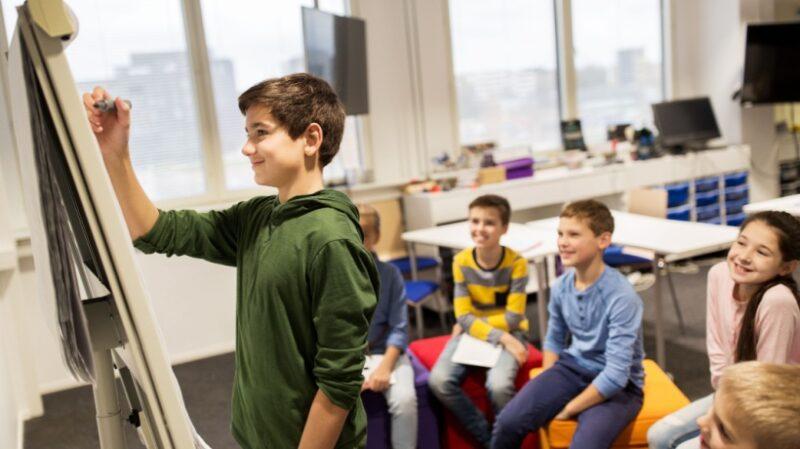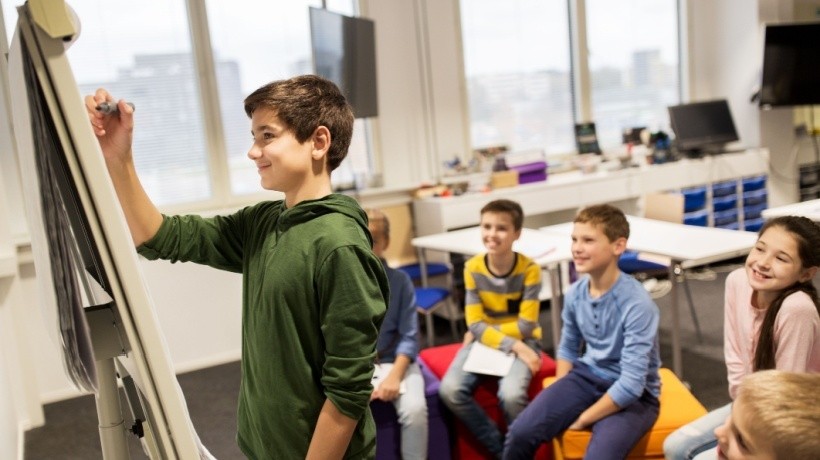[ad_1]

Everything You Should Know About Learner-Generated Content
Did you know that learners are 75% more likely to remember the learning content when they actively engage with it? Learning today isn’t just about passively absorbing information; it’s about creating it. This is why learner-generated content has become popular in recent years. But what is it? It’s content created by learners themselves as part of their educational journey. Whether it’s an infographic, a blog post, or even a short video, learner-generated content makes students more active in the learning process. They now create and share educational material instead of sitting there and consuming it. It’s a way of letting them add their voice to the whole experience.
Learner-generated content isn’t just limited to classrooms, though. Corporate training programs are embracing it, too. Instead of offering employees lengthy and dull webinars, for example, they create a video on a tool they’ve mastered or lead a discussion on a recent project. In short, learner-generated content is a way of giving control to the learners, allowing them to add their own elements to the courses, thus connecting them more with the content. Moving on, we’ll see the types of learner-generated content, as well as how they benefit the learning process, so you can decide if it’s a good option for your classroom.
Types Of Learner-Generated Content
Written Form
Written content includes essays, blogs, and discussion posts. Essays are the most demanding of all, as they require research and structure and are used by learners to support their arguments, dive deep into topics, and exercise their critical thinking skills. Blogs allow learners to showcase their personalities while sharing their knowledge. Lastly, discussion posts usually hold data, so it’s easy for learners to use them in class debates. You may think that teachers incorporate these into their classes, too. However, when learners create written content themselves, it makes it more interesting to them, and hence, they interact with it more meaningfully.
Multimedia
Multimedia content is a must to make lessons engaging and captivating. Whether it’s videos, podcasts, or infographics, this is where learners really get to show their creativity when you allow them to add them to lessons. First, learners can create any video, from short clips to mini documentaries. They also fit any topic, are engaging, and stay in the brain longer than text. Podcasts, on the other hand, are not widely used but are extremely helpful. They build confidence in speaking and storytelling while allowing learners to share their knowledge. And infographics are perfect for letting learners showcase their design skills. They make any topic seem easy to dive into, portraying the basic information in one place.
Collaborative Projects
Collaborative projects aren’t everyone’s favorite, but they can teach teamwork, social skills, and even patience. A collaborative project is usually accompanied by presentations, which allow learners to express their skills in areas ranging from design to writing and public speaking. Similarly, when you incorporate forums, learners can use them to brainstorm together, share their ideas, debate topics, and even express their opinions about courses and subjects.
The Positive Impact Of Content Generated By Learners
Active Engagement
Imagine learners sitting in a classroom or a training session, participating in a lesson about a supposedly important topic. If the course structure is outdated, they’ll probably lose their interest fast. But when they’re responsible for creating something, whether it’s a blog post, a video, or even a meme, they’re suddenly paying attention. Learner-generated content puts the power in the learner’s hands. They’re in control, they’re making decisions, and they actually care about the outcomes.
Enhanced Retention
They say that you don’t truly know something until you have to teach it or explain it to someone. That’s exactly what happens with learner-generated content. When learners create something, they have no choice but to absorb the material. They have to dive deep into the topic to create content that will explain it. And once they’ve put that much effort into understanding a topic, it sticks with them.
Collaborative Skills
Many people don’t like group projects. But the ability to collaborate is crucial in pretty much every aspect of life. Learner-generated content is naturally about teamwork. We’re talking about group presentations, collaborative videos, or shared online forums where everyone contributes their ideas. This resembles real-world situations where learners must communicate, compromise, and work toward a common goal. The best part is that they might even make some friends.
Critical Thinking
Creating content isn’t just about putting together facts or researching. The process requires analyzing, synthesizing, and presenting information in a way that others can understand. This enhances critical thinking, which is a sought-after skill out there. With learner-generated content, learners have to consider things such as whether the content makes sense, whether it connects to other things they’ve learned, whether there’s a better way to explain it, and others. In other words, they need to figure out how to make a topic more understandable to others, specifically their peers.
Diverse Perspectives
When the conversation is led by only one person, the instructor, the learning experience can feel limited. But when learners contribute their own content, there suddenly is a variety of perspectives, experiences, and ideas. Different people associate concepts with different things. The result is a varied learning experience, which prepares learners for a world where understanding diverse perspectives is essential.
Real-World Relevance
Learner-generated content is about building skills that actually matter in the real world. For instance, when learners create a video, they’re practicing storytelling, communication, designing visual content, and even basic tech skills. When they write an article, they hone their ability to express ideas clearly. These skills enrich their CVs, as employers don’t just want people who know stuff; they want people who can do stuff. So, learner-generated content is ideal for learners to practice creativity, adaptability, and innovation.
Implementing Learner-Generated Content
Choose The Right Tools
The tools you pick to help your learners create content are the most important aspect, as they can make or break the experience. For example, you don’t want your learners to struggle to figure out outdated or complicated platforms, which will kill their motivation. Opt for platforms that offer the design of multiple content types, such as infographics, slides, or social media posts. It’s also helpful if these platforms have ready-made templates that can inspire learners. Most importantly, they should be user-friendly and offer customer and tech support in case your learners need it.
Offer Guidance
Speaking of support, your learners need guidance when creating content, as they’re not the experts; you are. If they don’t know where to start with the design process, share some templates with them. Whether they need to create a video or an article, give them an outline to help them get started. Then, make sure they are in the right direction by showing them examples. It’s extremely important for them to know what to do and what not to do. Throughout the process, make certain that your guidance doesn’t feel like a lecture but like words of encouragement.
Encourage Creativity
Creativity flourishes when you let people have control over their own creative process. If there’s no flexibility, there’s no point in incorporating learner-generated content. So, how do you encourage learners to design freely? First, give them options for how they present their work. Some might want to make a video, while others prefer a slideshow, essay, or even a podcast. Next, let them know it’s okay to try something out of the box, even if it’s risky or fails. But remember to acknowledge effort even if the final result isn’t perfect. Learners are more likely to take risks when they know their efforts will be valued.
Conclusion
Today, traditional learning methods are no longer relevant, so learner-generated content is a fresh, dynamic approach to education and training. When learners create content, they don’t just consume information; they actively engage with it, making learning more meaningful and memorable. Learner-generated content also prepares learners for the real world, encouraging critical thinking, creativity, and collaboration, which are essential skills in both classrooms and workplaces. So, as an instructor, give learner-generated content a chance. To test it out, start with simple steps, like asking learners to create a blog post, infographic, or even a short video. You’ll notice how it transforms the learning experience, and you’ll want to make it a regular practice—we’re sure.
[ad_2]
Source link

